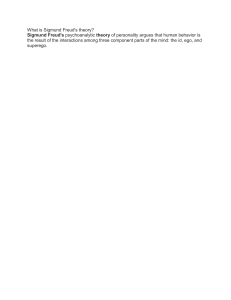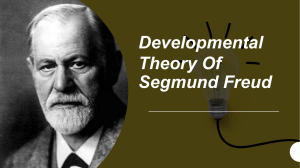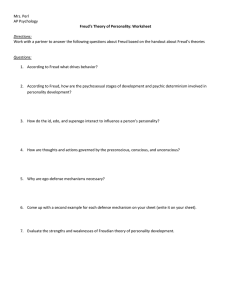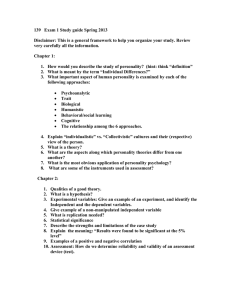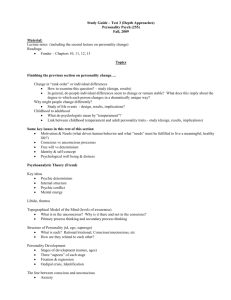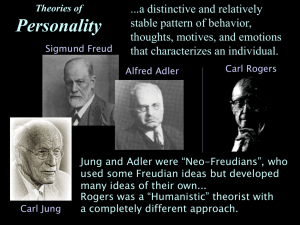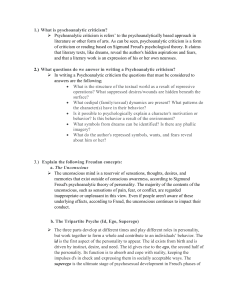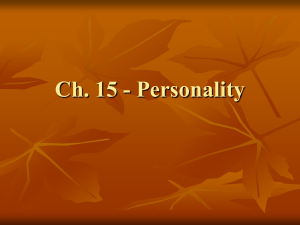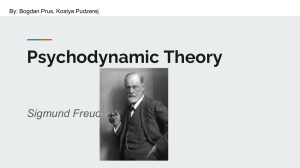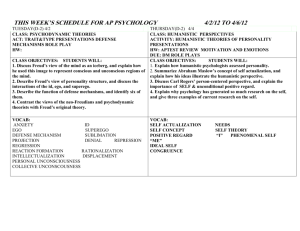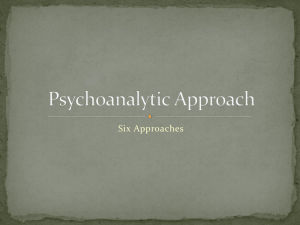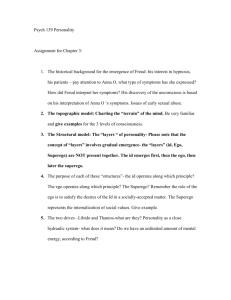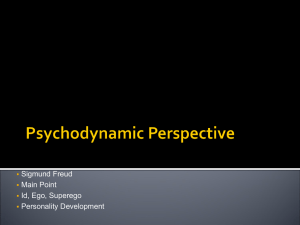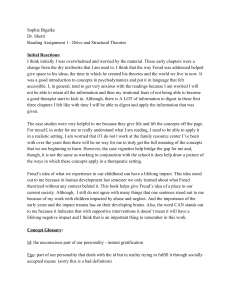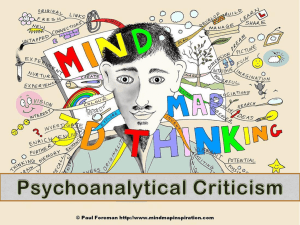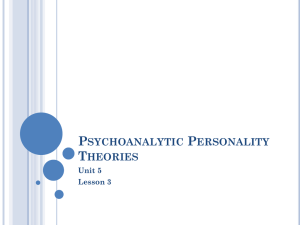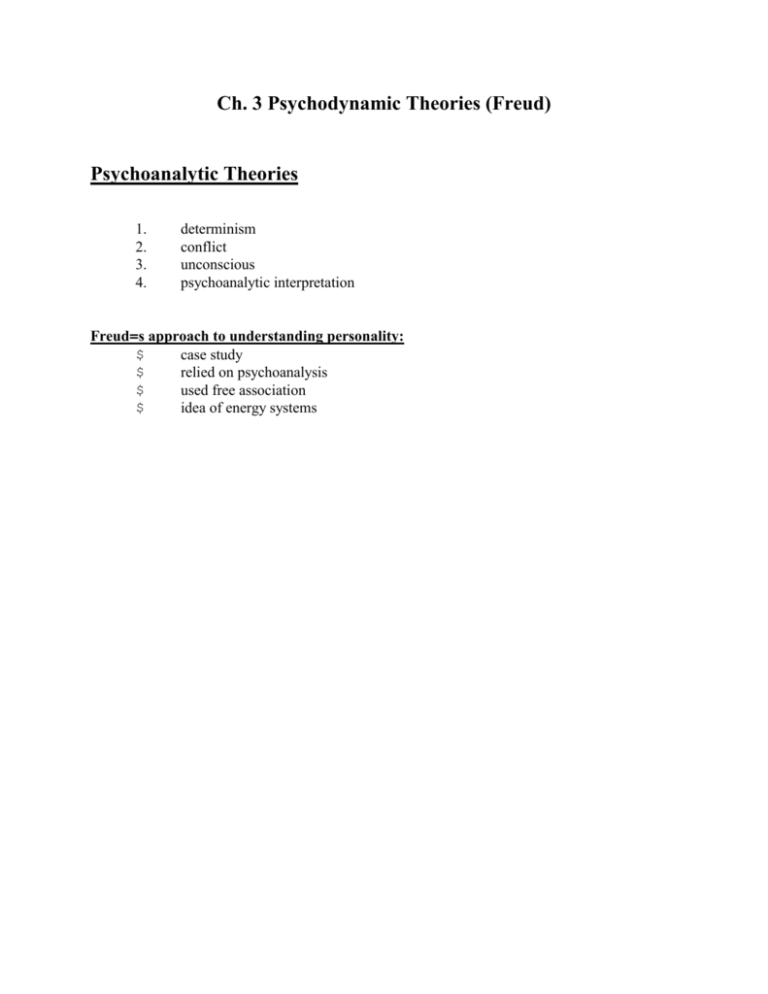
Ch. 3 Psychodynamic Theories (Freud)
Psychoanalytic Theories
1.
2.
3.
4.
determinism
conflict
unconscious
psychoanalytic interpretation
Freud=s approach to understanding personality:
$
case study
$
relied on psychoanalysis
$
used free association
$
idea of energy systems
Process of personality was very important
1.
Energy system - dynamic forces which form the basis of personality.
2.
Instincts (=drives)
$
sexual instincts
$
aggressive instincts
$
death instinct
$
life instinct
Libido
a. express without modification
b. block from expression
c. expressed in a modified way
3. anxiety - an unpleasant emotion in which a person perceives a threat.
4. defense mechanisms
E.g. denial repression catharsis
Structure of Personality as theorized by Freud
1. topographical model of human functioning
a. conscious
b. preconscious
c. unconscious
primary process thinking secondary process thinking -
2. Id, ego, superego
a.
Id
pleasure principle
b.
Ego
reality principle
c.
Superego
Growth and Development according to Freud
fixation
Five stages & psychopathology
1) Oral stage
2)
Anal stage
3 ) Phallic stage
4)
Latency phase
5 ) Genital phase
Assessment:
Use of projective techniques
2) ambiguous
3) test taker never told purpose
4) scoring on subjective clinical judgment
5) e.g. AI wish...@ ATell a story about the following picture@ Aink blots@
Rorschach Ink Blot Test
$
$
Exner scoring system
poor psychometrics
Behavior change
1) free association
2) dream analysis
3) insight
4) transference
5) usually takes years of work
6) effectiveness: mixed results.
Thought Question:
It has been said that psychoanalytic theory
suffers from a number of cultural biases
due to the limitation in kinds of patients
seen and the Victorian era from which the
concepts were originally derived. Which
concepts or parts of the theory would
become a particular target for arguments of
cultural bias?

